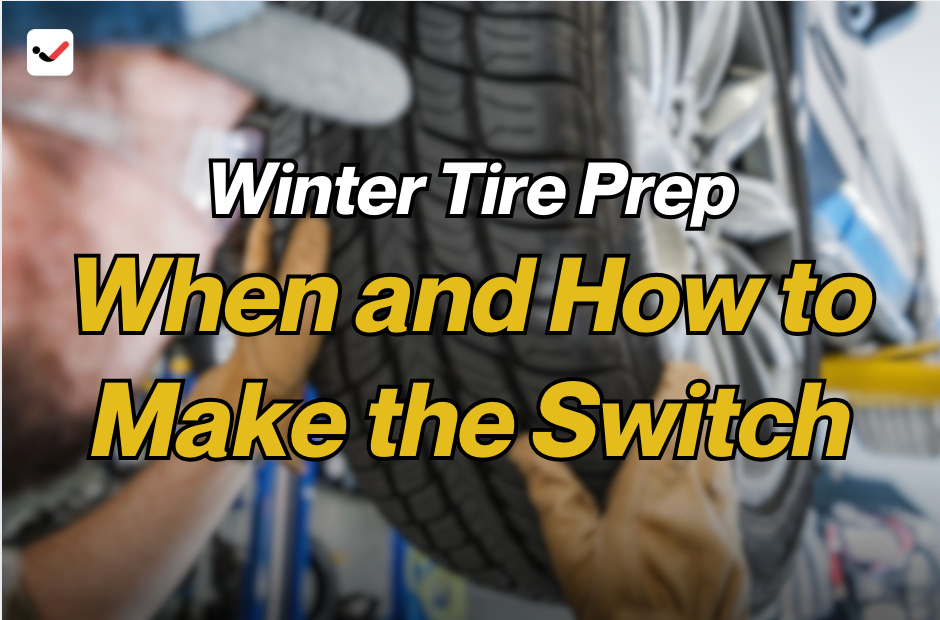Winter Tire Prep: When and How to Make the Switch
Winter Tire Prep: When and How to Make the Switch

Driving in winter brings unique challenges. Snow, ice, slush, and cold temperatures all impact how your vehicle handles the road. To stay safe and in control, switching to winter tires at the right time is essential. Many drivers wait too long or don’t prepare properly, which can lead to reduced traction, longer stopping distances, and even accidents. This guide explains when to make the switch, how to do it, and why it matters.
Winter tires are specially designed to perform in cold weather. Unlike all-season tires, they stay soft and grippy even when temperatures drop below freezing. This gives you better braking, cornering, and overall control. Whether you're navigating city streets or rural highways, having the right tires can make a big difference in your winter driving safety.
When to Switch to Winter Tires
The best time to change to winter tires is when the temperature consistently drops below 45°F (7°C). It doesn’t have to snow for winter tires to be effective. Cold air alone can make all-season tires hard and less responsive. As a rule of thumb, many experts recommend swapping tires in late October or early November, depending on your region.
If you live in an area known for early snowfalls or long winters, you might want to change even earlier. Pay attention to local weather forecasts. The key is to make the switch before the first freeze, not after. Waiting too long can catch you unprepared and put you at risk during that first icy morning commute.
Why All-Season Tires Aren't Enough
Many drivers assume all-season tires are good for year-round use. While they perform well in mild conditions, they are not built for extreme cold or deep snow. Their rubber compounds harden in low temperatures, reducing grip. Tread patterns on all-season tires also don't handle snow and slush as well as those on winter tires.
Winter tires have deeper grooves and unique tread designs that push snow and water away from the tire. This reduces the risk of hydroplaning and improves traction. They also include biting edges and siping (tiny slits) to grip icy surfaces. These features make winter tires far more effective for cold-weather driving.
How to Prepare for the Switch
Start by checking your winter tires before installing them. Look for signs of wear like cracks, shallow tread depth, or uneven wear. The tread should be at least 5/32 inch deep to handle snow properly. If they’re too worn, it's time to buy new ones.
Make sure your tires are the correct size for your vehicle. You can find this information in your car’s manual or on a sticker inside the driver’s door. Use matching tires on all four wheels. Mixing types can lead to poor handling and uneven wear.
You can switch the tires yourself if you have the tools and experience, but many people prefer going to a tire shop. Professional technicians can mount, balance, and inspect the tires quickly. Some shops offer tire storage services, so your off-season tires don’t take up space at home.
Don’t Forget Tire Pressure
Cold weather affects tire pressure. For every 10°F drop in temperature, tire pressure can drop by 1 PSI. Under-inflated tires wear out faster, reduce fuel efficiency, and affect handling. After switching to winter tires, check the pressure regularly and adjust as needed. Use a reliable tire pressure gauge and follow the recommended PSI listed in your vehicle manual.
Also, check the tires periodically throughout the winter. Cold weather can create slow leaks, especially if the tire seal weakens. Driving on low tires in winter conditions can be dangerous.
Tips for Storing Your Other Tires
Proper tire storage helps extend the life of your all-season or summer tires. Clean them before storage to remove road salt and grime. Store them in a cool, dry place, away from direct sunlight. Keep them off the ground if possible, and avoid stacking them horizontally if they're still on rims. Use tire bags or covers to protect them from dust and moisture.
Label the tires by position (e.g., front left) so you know where they were installed. This helps with tire rotation and even wear next season.
Winter Driving Is Safer With the Right Tires
Good tires don’t just help with traction; they also help with confidence. When you know your car can handle icy roads and snowy hills, you can focus more on driving and less on worrying. Winter tires reduce stopping distances significantly, even in slushy or frozen conditions. That could mean the difference between a close call and a crash.
Also remember, in some regions, winter tires are not just recommended but legally required during certain months. Failing to comply can result in fines or issues with insurance coverage. Check local regulations if you're unsure.
Preparing for winter driving doesn’t take much effort, but it makes a big difference in safety and peace of mind. Knowing when to switch to winter tires and how to do it properly keeps your vehicle ready for whatever winter throws at it. Don’t wait until the snow falls or the roads ice over. Plan ahead, make the change early, and drive with confidence all winter long.
Your tires are your only connection to the road. Give them the attention they need to keep you safe during the coldest months of the year.

